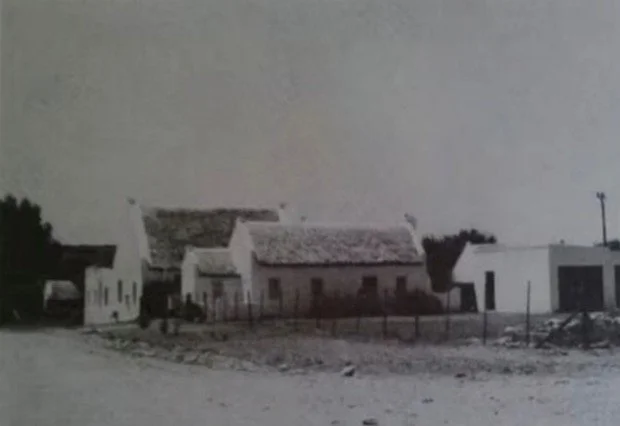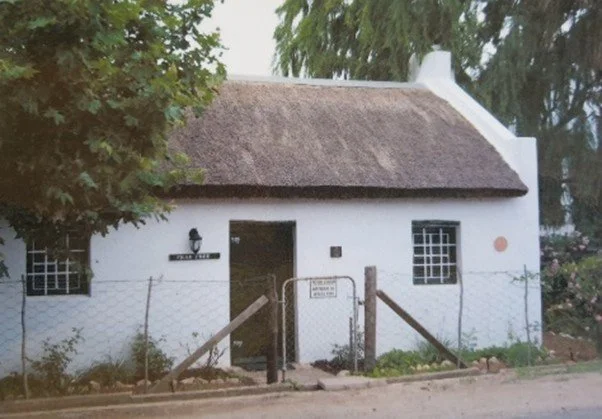
GROUP AREAS ACT
Tommy Payne recalls an earlier time, before segregation disrupted the harmonious community of McGregor:
You know, I’m an old man now. I’ve been through the mill and seen what the governments have done. But I’ve said many a time to myself, I’d like to know if things would have stayed as they were, 80 years ago, whether we’d have been in a better position than now. We lived so peacefully. We had respect for each other. If I came to you, as a Coloured to a European, it was Noor and Baas, out of respect. You would say Aia or Outa, again out of respect. There was peace and harmony. We were friends and playmates. We played together, played marbles together, went swimming together, played rugby, watched the cows. Politics has killed this country, I tell you. We lived happily. No arguments, no fighting, no killings. And there was no hunger. If you hadn’t a piece of bread, and I’d got one, I’d share it with you. Then I’d borrow a half cup of coffee or sugar, and tomorrow I’d give it back. That’s how we operated. I sit at home sometimes now and think those were beautiful days. We had time for each other. There was no gossip, no speaking bad about other people. We were busy, worn out after a day’s work.
On 18 October 1954, an official inspection was carried out to determine where people should live and how the village should be demarcated in terms of the Group Areas Act (1950). McGregor was one of the first villages targeted in this way, partly because its isolated location and small population of residents led government to think it was a ‘safe’ place to use as a ‘testing’ ground.
However, they were mistaken: McGregor’s residents – White and Coloured, English and Afrikaans – banded together and resisted the Group Areas Act for 17 years. It was only on 13 October 1967 that some Coloured families were eventually persuaded to sell their properties and relocate.
The technique used by the apartheid government to ‘encourage’ people to move was based on showing apparent concern for health and sanitation. Routine health inspections were carried out by the Chief Health Officer of Cape Town, which highlighted the poor living conditions of Coloured and Black people compared with those of White people. This then became a tool to ‘clean up’ a neighbourhood, on the grounds that it was unsanitary, with the promise that people would be better provided for in state-subsidised housing.
A health inspection on 29 July 1960 noted:
There has been no change and conditions are far worse now than they were between the years 1954 and 1955. The last full inspection was held on the 18 October 1954, where the potential of a housing scheme was discussed, as well as the border of the Group Areas for the Coloured people. They call for the McGregor Municipality to urgently inform them of where they would like the boundary to be, as this will then allow the process of housing to follow.
The Group Areas Act was officially enforced in McGregor in 1967, after a death in a family living in an area earmarked for removal, the family would be bought out of their home for a nominal sum and moved to a new, state-built house in Eerste Laan.
For some families the lure of a new, modern building softened the prospect of relocation, but it soon became apparent that the village had been segregated, and the normal rhythm of life disrupted. Most of the new properties were not built in the same style as the vernacular cottages and were of modern-day materials, which made them harder to relate to.
Amelia Ficks:
When people died, and houses became empty, the Municipality took the houses and put whites into them. The Municipality did give people notice. They first built scheme houses and then people had to move, those from the dodgy houses first. Then Whites bought the houses in Bakkies.
It is interesting that the dividing line between ‘White’ and ‘Coloured’ areas in McGregor was not a street, as it was elsewhere. Instead, it was the boundary between erven that backed onto one another. This is most likely due to the existing urban environment where the majority of Coloured people already lived. However, it illustrates the absurdity of the Act: different races had to live in different areas, but it was nonetheless deemed ‘acceptable’ that White- and Coloured-owned properties could share a rear boundary.
Piet October:
In 1967 the Group Areas Act law came into the village like a thief descending in the night and took away something incomprehensible from the town and its people. A peaceful unit that had been taken for granted and right for more than a hundred years suddenly changed by an invisible dividing line just across the main street. How is it then that dividing lines have now been made which the lords have not established? The love and peace of children who have laid foundations in this town for a wonderful future have been undone by this law. We suddenly feel awkward to sit with Whites around the kitchen table and chat as we always once did.
Bo-dorp and Onder-dorp are unofficial titles that the people of McGregor have bestowed upon the two residential areas within the village. Contrary to present-day belief, they are not a racial demarcation but instead were derived from the topography of the village being situated on a hill, with the erven in the higher area taking on the title ‘Bo-dorp’, and with the erven further down the hill taking on the title ‘Onder-dorp’. These titles pre-date the racial segregation era of the village, as the earliest known reference to the Onder-dorp is by A van Reenen, who wrote in the McGregor Secondary School Yearbook of 1938:
Then the farm was subdivided into erven and sold in about 1856. Rev. H Tindall, the person for the Coloureds, bought the ‘ONDER-DORP’ and sold these erven to members of his congregation.
Most of the residents identified for relocation lived in the Onder-dorp, in Kantoor, Loop and Barry Streets, in an area known as the Moerbeibakkie or Bakkies (Mulberry Bakkie), named after the bakkies (or punnets) used for selling mulberries and other fruit.
A house called Page’s Halt commemorates a family that managed to retain their property, despite it being earmarked for removal under the Group Areas Act. This came about due to the employer of a family member having connections in government, which allowed their name to be removed from the forced removals list.
Floris Williams:
It was like a dividing wall across McGregor. Suddenly Keerom, Tindall …overnight became White.
Onder-dorp properties were then sold to private individuals, mostly from Cape Town, who restored them as weekend retreats. This started a long legacy in McGregor of transient residents, or rolbosse, as they are locally known. Like a tumble weed, they blow in with the wind for a short while (around two years) and then blow out of the village again.
Former Deputy Mayor James Kriel:
What I’m afraid of is that the cottages will be bought up and bulldozed out of existence. If that happens, it will completely ruin the character of the town.
In 1976 the municipality proposed building additional housing in the Onder-dorp in typical government style. But the entire village stood together and insisted that the designs be altered to incorporate and relate to McGregor’s vernacular heritage. This move was led by local artist Philip Terblanché, of Rhebokskraal Farm, who successfully got the designs of these state-subsidized houses altered to a semi-detached style incorporating thatched roofs and timber cottage-pane windows. These houses were built in Long Street, Keerom Street and Tweede Laan, and were recognised as being highly significant by the former National Monuments Council, which declared them all National Monuments in 1997. They are now graded as Provincial Heritage Sites (PHS).








